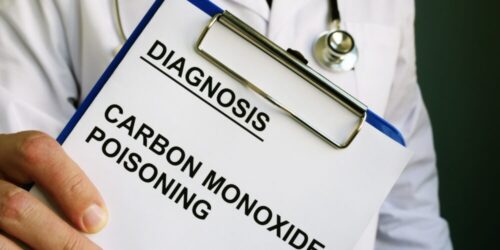
9.12.23 – SSI – Fire Side Chat – Shane Clary
NCOAA says a high number of medical issues that are misdiagnosed or not diagnosed at all are caused by long-term exposure to CO.
This article is being written in Wilmington, N.C. I have just attended the annual meeting of the National Association of State Fire Marshals (NASFM). During this meeting was the inaugural CO Safety Summit. The Summit was being conducted by the Carbon Monoxide Safety Coalition.
The Coalition is an offshoot of the National Carbon Monoxide Awareness Association (NCOAA).
The objective of NCOAA and the Coalition is to bring awareness on the issue of long-term exposure to CO. It is the opinion of the NCOAA that a high number of medical issues that are misdiagnosed or not diagnosed at all are caused by long-term exposure to CO.
There are requirements within the model codes for CO detection within single-family dwellings. There are also requirements for CO detection in multiresidential occupancies in which fuel burning appliances are present. There are also mandated requirements for educational occupancies.
The CO detectors that are required by these codes are designed to detect high levels of CO, in which there is an impending risk of a person being overcome by carbon monoxide.
There are two UL standards that cover CO alarms and detectors. UL 2034, Single and Multiple Station Carbon Monoxide Alarms covers the manufacturing and testing of CO alarms. These are devices that one would purchase at a hardware store.
They are powered by an internal battery or 120VAC with a secondary battery. One of the requirements for these units is that they have an end-of-life alert at the 10-year mark.
UL 2075, Gas and Vapor Detectors and Sensors covered in part CO detectors, that are connected to an alarm system.
The requirements for the installation, inspection, testing and monitoring of these alarms and detectors are found within NFPA 72, National Fire Alarm and Signaling Code. As I stated above, these alarms and detectors are installed within an occupancy to alert the occupants that they need to leave, now!
These devices will active under three conditions:
- 70-149 parts per million one to four hours for activation
- 150-399 parts per million 10 to 50 minutes for activation
- 400+ parts per million Within four minutes of activation
Levels at 400 parts per million or more is extremely hazardous to one’s health. Exposure to the other levels that are listed above also become dangerous with a few hours, depending upon the level. The concern that the coalition has is long-term exposure to lower amounts of CO.
The symptoms may appear to being caused by the flu, COVID-19 or other ailments. Physicians are not taking a look at the percentage of CO that a person may have within their body.

More About the Importance of Carbon Monoxide Safety
It was the opinion of a few of the participants of the summit that:
- Detectors or alarms should be installed to detect lower amounts of CO within an environment.
- Detectors or alarms should be installed within more occupancy classifications, if not all occupancies.
- There needs to be an outreach to the general medical profession to look for low level exposure to CO, and how to test for it.
During the summit, four workgroups were established:
- Codes, Standards and Regulations
- Surveillance Data
- Science and Innovation
- Emergency and Trade Response
Not only is the NCOAA concerned about the long-term exposure that can occur within an occupancy, but the exposure to CO that firefighters may have during the execution of their work. On of the byproducts of combustion is CO.
In addition to building structures, there was also discussions on the need for CO detection within various means of transportation, such as cars and trucks, boats and even commercial aircraft.
A number of the members of the NCOAA are very passionate about the dangers of CO, as they have lost loved ones to CO exposure. While there does need to be education on the dangers of long-term exposure to CO, there also needs to be education regarding CO detection to the NCOAA.
During the summit, there were some incorrect statements being made on the siting requirements for CO alarms and detectors.
The CO detection industry needs to become involved with the NCOAA and Coalition so that reasonable regulations, codes and standards are promulgated. The working groups well be meeting virtually during the next year and are being tasked to have recommendations by the second annual meeting to be held in July/August 2024.
While I have stated that reasonable regulations, codes and standards need to be looked at, the mission of the NCOAA and Coalition are vital and needed.
